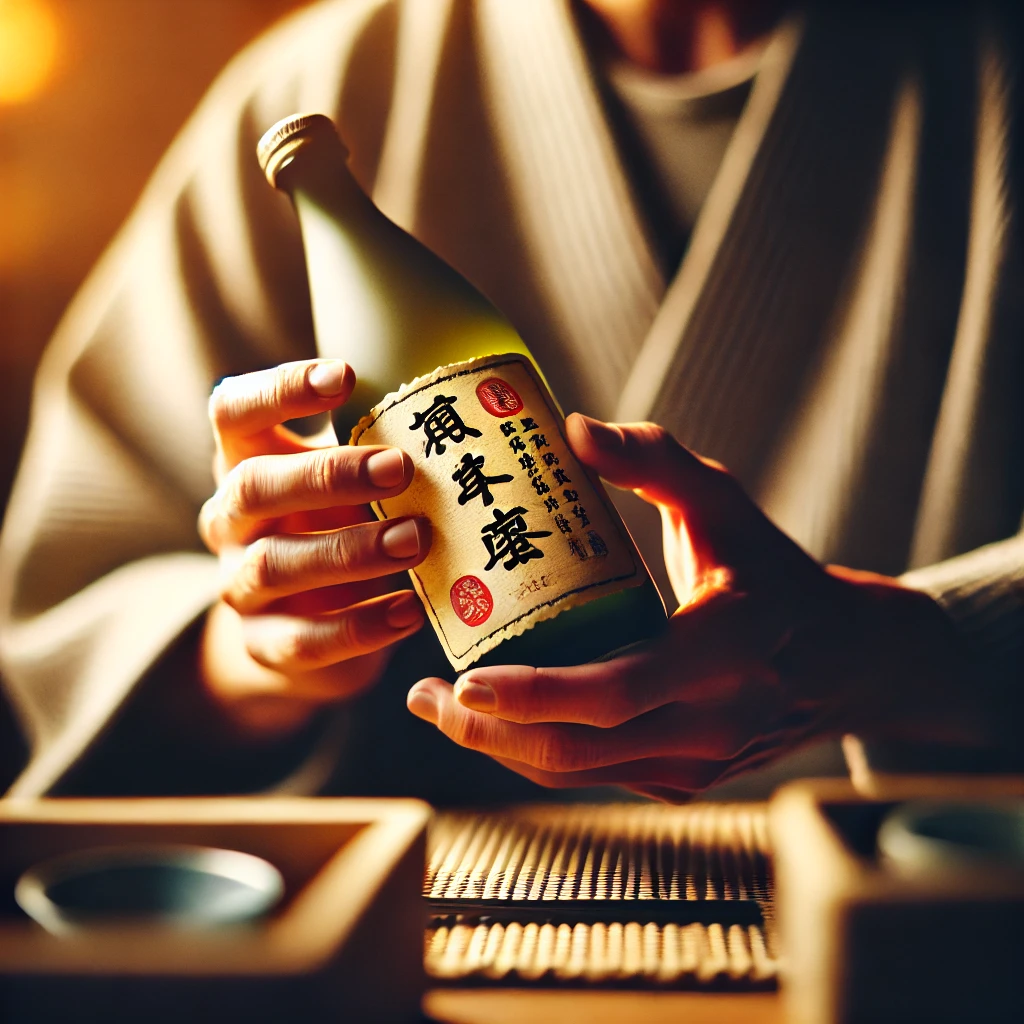Hello, it’s Mana! Today, I’m sharing what I’ve learned in my study for the Sake Certification about the labels on sake bottles. Do you know what information is written on a sake label? The front label contains many important details that can help you choose the right sake for you. Knowing this can make finding the perfect sake much easier. Let me explain in detail what’s written on the front label!
1. Seishu or Sake
The first thing you’ll see is the inscription “Seishu” or “Sake”. This is the name defined under the Liquor Tax Law, and legally, sake is classified as “Seishu”. Traditionally called Seishu to distinguish it from cloudy sake and doburoku, nowadays it’s okay to consider Seishu and Sake as the same.
To be recognized as Seishu, it must be fermented from rice, rice koji, and water. It must also contain a certain level of alcohol and sugar content. If it’s labeled as “Seishu” or “Sake”, it means that it meets the legal requirements.
2. Specific Name Sake
Next, pay attention to “Specific Name Sake”. This is an important classification indicating the type of sake, and it’s often mentioned on the label. Specific Name Sake is divided into eight categories based on the ingredients and rice polishing ratio.
- Junmai: Sake made only from rice and rice koji. There’s no specific requirement for the rice polishing ratio, and you can enjoy the natural flavor of the rice.
- Special Junmai: Among Junmai sake, special ones are those with a rice polishing ratio of 60% or less or made by a special method. They offer a lighter taste.
- Honjozo: Sake made from rice, rice koji, and a small amount of brewer’s alcohol. It features a rice polishing ratio of 70% or less and is known for its clean and light taste.
- Special Honjozo: Honjozo sake with a rice polishing ratio of 60% or less. They also have a light taste but with a fruity aroma.
- Ginjo: A fragrant and light sake made with rice that has a rice polishing ratio of 60% or less. Often contains brewer’s alcohol, and its aroma enhances when served cold.
- Junmai Ginjo: Similar to Ginjo, but made only from rice and rice koji, using rice with a polishing ratio of 60% or less. It retains a rich rice flavor with a fragrant aroma.
- Daiginjo: Daiginjo is considered the highest grade of sake, with a rice polishing ratio of 50% or less. It uses rice that is milled down to half or more, known for its fruity aroma and delicate flavor.
- Junmai Daiginjo: Also made from rice with a polishing ratio of 50% or less, but exclusively using rice and rice koji. Like Daiginjo, it features a fragrant aroma and the robust flavor of rice.
| Rice, Rice Koji only | Rice, Rice Koji, Brewer’s Alcohol | |
| No specification | Junmai | |
| 70% or less | Honjozo | |
| 60% or less | Special Junmai Junmai Ginjo | Special Honjozo Ginjo |
| 50% or less | Junmai Daiginjo | Daiginjo |
One thing I realized while studying is that a lower rice polishing ratio doesn’t necessarily mean a higher quality sake. Indeed, the balance of aroma and flavor is crucial, and more milling doesn’t always mean better taste. Finding what suits your taste is best!
3. Brand
In the center of the label, the brand of the sake is often prominently displayed. The brand represents the brewery’s dedication and the local culture. For example, auspicious characters like “Crane”, “Mountain”, and “Chrysanthemum” are often used in the names of sake. Recently, modern and unique names like “Woman’s Tears” and “Detective” have become more popular.
Imagining the personality of the sake from its brand and choosing accordingly is one of the joys!
4. Date of Manufacture
The label shows the “Date of Manufacture”, which refers to the date the sake was bottled. This date alone doesn’t tell when the sake was actually brewed (start of brewing), but it serves as a reference for distinguishing between new and aged sake.
As sake ages, it matures. For instance, fresh sake has a fresh taste, but over time it becomes mellow, changing as if it were a different drink altogether. Checking the manufacture date helps you enjoy sake at your preferred stage of its flavor profile.
5. Alcohol Content
Last, you’ll want to check the “Alcohol Content”. While sake typically ranges from 15-16%, some can be nearly 20%. The higher the sake meter value, the more robust and rich the flavor tends to be.
Considering your own tolerance for alcohol is also important. When drinking high-alcohol sake, it’s a good idea to prepare “mellowing water” to drink alongside it. This helps balance the experience and enjoy the sake more deliciously.
Summary
Sake labels contain crucial information about the drink’s personality and characteristics. Especially, checking items like Seishu or Sake, Specific Name Sake, the date of manufacture, and alcohol content can make it easier to choose the right sake for you. Next time, take a close look at the label and find the perfect bottle for yourself!
Next time, I’ll explain in more detail the “Sake Meter Value”, “Acidity”, and “Amino Acid Level” written on the back label. Stay tuned!



コメント